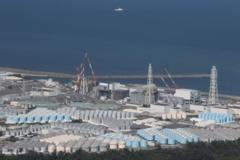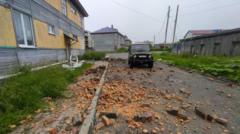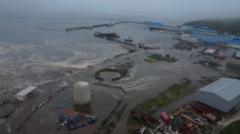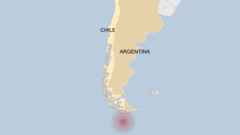Earlier today, the Fukushima nuclear power plant experienced a full evacuation of its 4,000 workers in response to a tsunami alert following an 8.7 magnitude earthquake off Russia’s coast. This alarming announcement rekindles memories of the catastrophic 2011 disaster where a tsunami and earthquake led to a significant nuclear meltdown at the plant. The implications of the warnings are profound, as they highlight both the ongoing risks and the lingering challenges of decontamination at the site.
Evacuations at Fukushima Nuclear Plant Following Tsunami Alerts

Evacuations at Fukushima Nuclear Plant Following Tsunami Alerts
Workers at Japan's Fukushima nuclear facility evacuated after a powerful earthquake triggered tsunami warnings nationwide.
In light of recent seismic activity, the operators of the Fukushima plant, which still houses significant nuclear waste, reported no abnormalities detected following the tremors. However, for residents in the Fukushima prefecture, such alerts are stark reminders of the devastating 9.0 magnitude earthquake and subsequent tsunami that struck on March 11, 2011. The disaster resulted in over 18,000 fatalities and led to widespread devastation in the region, with the nuclear plant suffering multiple failures, including overheating of its reactors after their cooling systems were rendered inoperable.
The aftermath saw significant environmental contamination, requiring the evacuation of more than 150,000 residents and the establishment of a permanent exclusion zone around the plant. Over 880 metric tons of hazardous materials remain at the site, and efforts to remove debris and safely decommission the plant are projected to span decades, demanding the efforts of tens of thousands of workers at an estimated cost of $145 billion.
Recent delays in starting full-scale removal of melted fuel debris until at least 2037 have led to skepticism among experts regarding the viability of decommissioning by the 2051 deadline. With Japan’s energy policies in a state of flux, the government is contemplating a renewed reliance on nuclear power, citing demand in various sectors. This has the potential to ignite local opposition, further complicated by ongoing safety concerns highlighted by today's tsunami alerts, which have already prompted evacuations in various coastal areas.
Furthermore, Japan’s location on the seismic Ring of Fire has continued to pose risks, with thousands of minor tremors occurring annually and predictions for more significant events in the coming decades. Earthquake preparedness remains a national priority, but fears persist as societal memories of past disasters linger.
Today's alerts underline the resilience and dangers faced by Fukushima and its neighboring regions, as both the people and the environment remain in a delicate balance of recovery and uncertainty.
The aftermath saw significant environmental contamination, requiring the evacuation of more than 150,000 residents and the establishment of a permanent exclusion zone around the plant. Over 880 metric tons of hazardous materials remain at the site, and efforts to remove debris and safely decommission the plant are projected to span decades, demanding the efforts of tens of thousands of workers at an estimated cost of $145 billion.
Recent delays in starting full-scale removal of melted fuel debris until at least 2037 have led to skepticism among experts regarding the viability of decommissioning by the 2051 deadline. With Japan’s energy policies in a state of flux, the government is contemplating a renewed reliance on nuclear power, citing demand in various sectors. This has the potential to ignite local opposition, further complicated by ongoing safety concerns highlighted by today's tsunami alerts, which have already prompted evacuations in various coastal areas.
Furthermore, Japan’s location on the seismic Ring of Fire has continued to pose risks, with thousands of minor tremors occurring annually and predictions for more significant events in the coming decades. Earthquake preparedness remains a national priority, but fears persist as societal memories of past disasters linger.
Today's alerts underline the resilience and dangers faced by Fukushima and its neighboring regions, as both the people and the environment remain in a delicate balance of recovery and uncertainty.




















